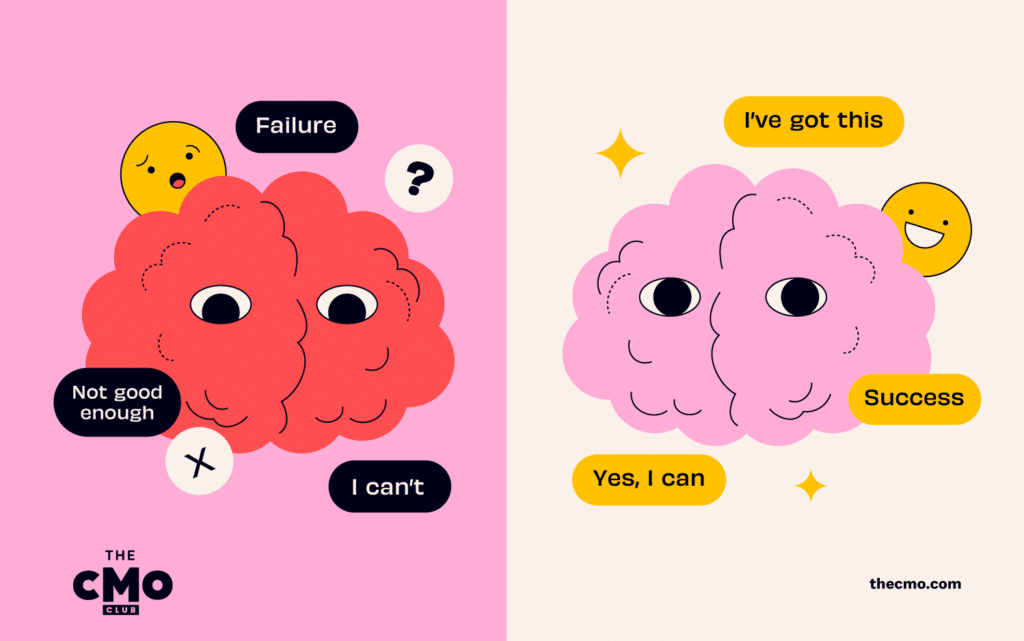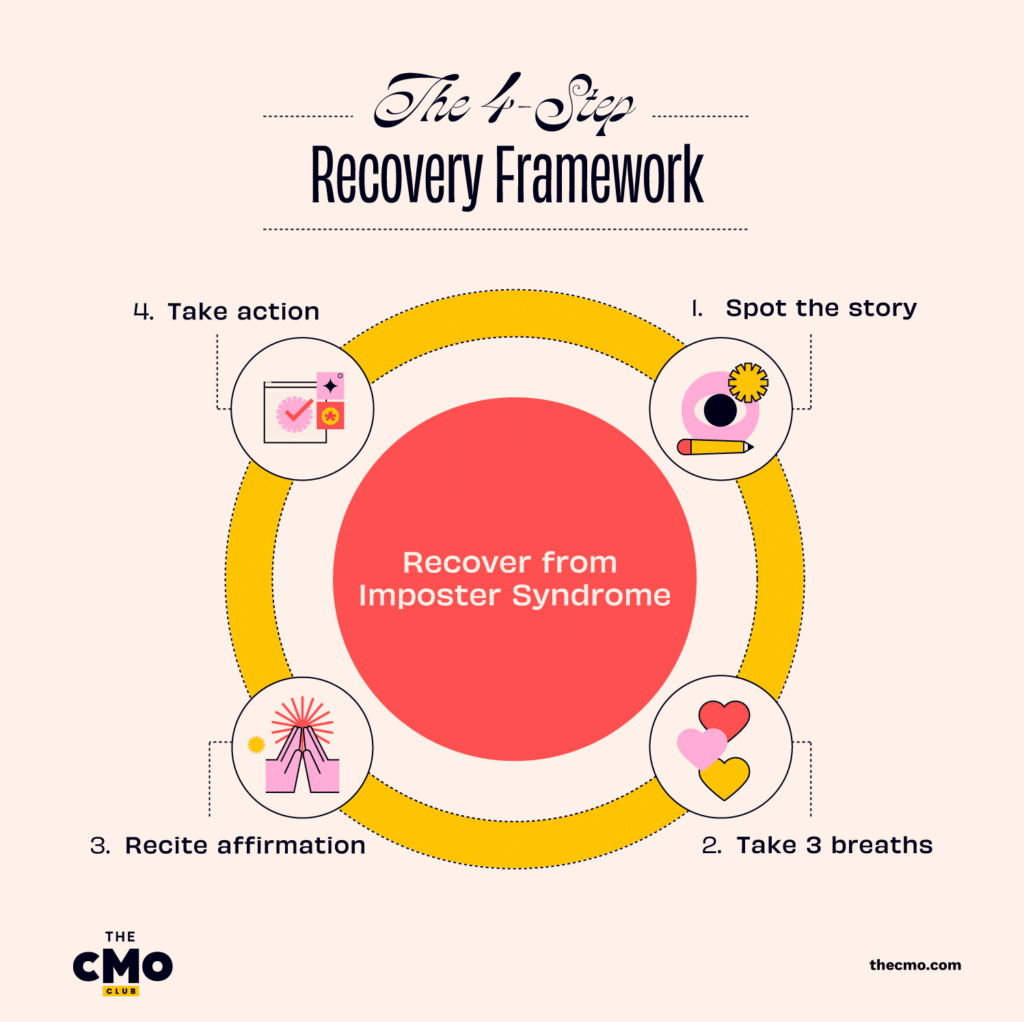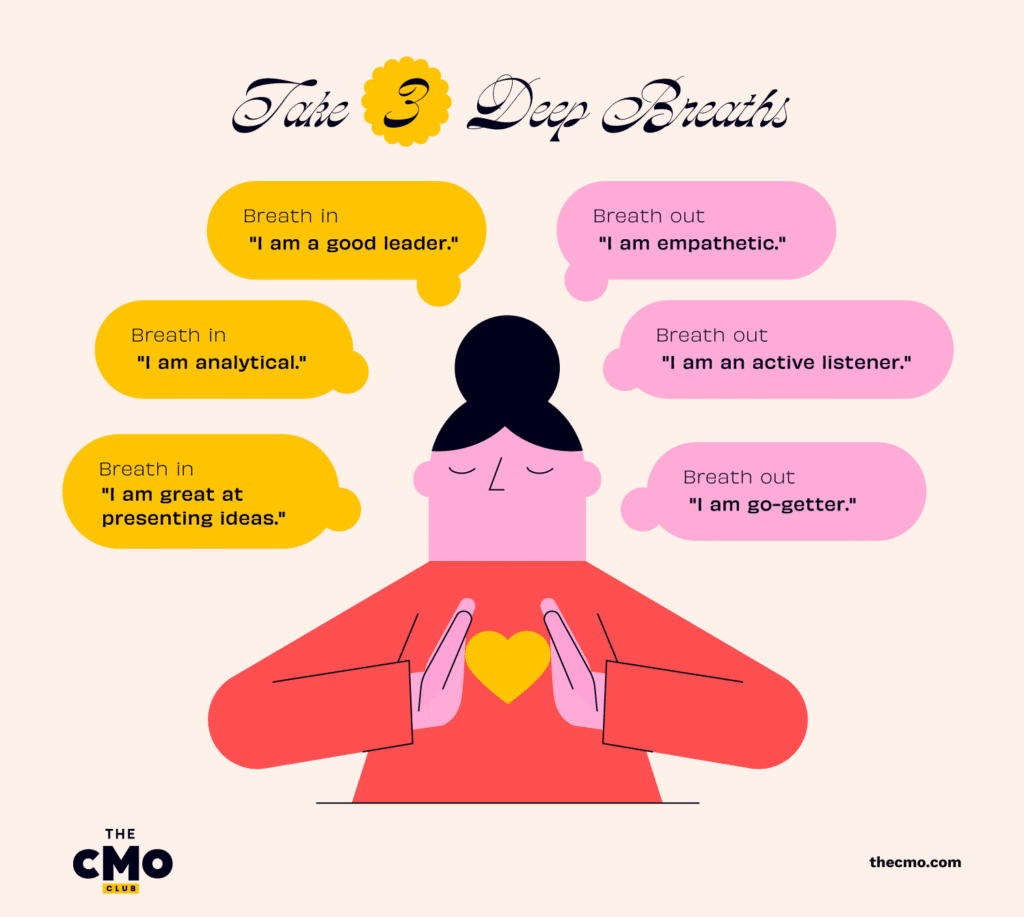When I was asked to write this article, my initial response was, “Me? I’m not a writer. Why would they ask me to do this?” There were a few minutes where I was just staring at my screen, thinking, "What do I tell them?"
After a few deep breaths, I recognized that familiar negative self-talk.
Imposter syndrome.
After all, I’m a marketing leader at Condé Nast and a Certified Life and Career Coach. I have so many valuable tools and insights to share, so wouldn’t I be qualified? Before I hit send, I recited the mantra that I created for myself during these moments: I said "I am worthy" three times.
Now here I am, about to teach you a four-step framework for recovering from imposter thoughts more quickly. By the end of this article, you will have the tools you need to build self-awareness and rewire your negative thoughts, along with several actionable exercises to boost your confidence.
What Is Imposter Syndrome?
Imposter syndrome is the experience of intellectual self-doubt and a sense of being a fraud. Many high-achievers face moments where they question whether they deserve the position, opportunity, or project they are involved in.
Social psychologist and Harvard Business School Professor, Dr. Amy Cuddy, defines imposter syndrome as, “a collection of feelings of inadequacy that persist despite evident success.” According to her research, up to 80% of people feel like they're frauds at one point in their life.
What does imposter syndrome feel like?
Quite simply, imposter syndrome makes you feel like a phony—it brings up thoughts of self-doubt and can lead to anxiety.
Imposter syndrome is experienced when we let our negative thoughts persuade us into thinking we are not good enough. That we should not, and are not worthy enough, to start whatever thing is in front of us at that moment. I am here to remind you that these thoughts are not facts!
Sometimes it is hard to recognize what imposter syndrome feels like. Here are some common examples of scenarios where imposter syndrome can be triggered, plus the negative thoughts that could be going through your head:
The secret skill you need to overcome imposter syndrome
Early in my career, I was very much a part of the 80% who faced regular imposter thoughts. It stopped me from going after what I knew (deep down) I could do and deserved. I wouldn’t raise my hand for new projects, I would compare myself to others in similar roles, and I wouldn’t advocate for myself.
After a lot of introspection (and honestly, just failing a lot), I realized that there is one single practice that, if done correctly and consistently, can really allow you to overcome imposter syndrome. This one skill, I believe, is the secret to overcoming imposter syndrome more quickly.
That practice is rewiring your thoughts.

I am not going to say it is easy. Recognizing your thought patterns and triggers takes time, deep reflection, and a lot of self-compassion. However, once you do the work to understand yourself and your self-doubts, you are ready to take on challenges with more resilience.
Here are two questions designed to help you cultivate self-awareness and challenge negative thoughts. This self-awareness is a crucial prerequisite to overcoming imposter syndrome.
- What triggers my feelings of self-doubt or inadequacy?
Identify specific situations, tasks, or interactions that tend to evoke imposter feelings. Can you spot any patterns? Any specific people who pop up in most instances (ie. a manager, certain friends, certain networks)?
- How do I talk to myself when I am experiencing moments of self-doubt?
Our self-talk shapes our thoughts and feelings. Once we recognize our self-talk, we can start to intentionally challenge and change those thoughts.
The 4-Step ‘Recovery’ Framework

Now that you understand where your negative thoughts come from, let's dive into how you can recover from imposter thoughts in the moment. Here's my simple 4-step framework:
Step 1: Spot the story
Become aware of why you are having these specific thoughts in this specific moment. Did something trigger an old wound? Or a limiting belief? For example, when I got asked to write this story, the old limiting belief that came up was “I am not good enough.”
Step 2: Take three deep breaths
I know this sounds corny, but breathing really does help you come back to the present. It is one of the most common mindfulness techniques—one that allows us to feel grounded—and yet, we often forget to use it.
After you spot the limiting belief, bring yourself back by taking three deep breaths. For maximum effectiveness, condition yourself (AKA build a new habit!) to run through your skills and strengths during the breathing exercise.

Step 3: Create and recite a positive affirmation
I know this sounds "woo-woo," but reciting a statement that is authentic to you, one that reminds you how great you are, is very powerful. It is important to take the time and think through one that resonates with you. Here are some examples of positive affirmations:
"I am smart."
"I can do this."
"I am creative."
"I am a leader."
Then, once you have an affirmation that you know will break you out of your imposter thoughts, you can recite it to yourself.
The affirmation that means the most to me, that brings me back to myself, is: "I am worthy."
Step 4: Take ONE small action
People underestimate the power of taking just one small action. Taking action breaks you out of your negative thought patterns and helps you build courage one step at a time. But, you have to take that first step. Some examples of ‘first steps’ are:
- Saying yes to the opportunity.
- Doing a Google search of the topic that you feel unsure about. Get familiar with it. Start learning.
- Setting up a call with your manager to walk through questions you have on a new project. Just set up the call! Think through the questions later.
- Write down 1-3 sentences for that new pitch or project. Finish it later. Just START!
You’ll notice that once you take one small action, you build more courage and start to take another small action, and then another, and then another.
My small step was replying “yes, I will do it” to the email. I told myself I would think through the outline in the next few days. Right now, I JUST had to say yes.
How To Build Confidence
Another clear-cut way to recover from imposter syndrome more quickly is by building self-confidence. When you are confident in yourself and your abilities, you are more likely to take risks and get out of your comfort zone.
I share a downloadable resource a little further in this article, but for now, here are my most effective tips and exercises for building confidence:
1. Discover your strengths
How often do you truly consider your strengths? When I heard the dictionary definition of confidence, I was blown away by how actionable it was. Here it is: “Confidence is a feeling of self-assurance arising from one's appreciation of one's own abilities or qualities.”
- Try this: Write out 5 abilities (ie. leadership, data visualization, SEO) and qualities (ie. empathetic, communicative, efficient) that you are proud of. When you consciously recognize and understand your strengths, you can use them better in the workplace and beyond!
2. Create an accomplishment list
Write out all of your accomplishments somewhere that is very accessible to you (I recommend the notes section of your phone). Include everything—big and small—without leaving anything out. For example, any strategic launches, fears you overcame, and awards you received. Any time you notice imposter feelings popping up, read that list. Remind yourself how awesome you are.
3. Define what success means to you
Stop comparing yourself to others. Comparison can be a major catalyst for imposter syndrome. We tend to compare ourselves to others when we lack clarity about what is truly important to us. If we don't define what success means to us, we will end up using someone else's definition. To avoid this, take the time to define what success and happiness mean to you in these areas:
- Professionally (career goals, financial goals)
- Physically (sleep, diet, exercise)
- Emotionally (mental health, mindfulness, personal development)
- Intellectually (development of intellect and/or skills)
- Relationally (romantic, friendly, and/or family relationship goals)
4. Build a strong personal brand
A personal brand is your unique reputation. It is who you are, what you do, and what you stand for. I truly believe that the most effective way to build long-standing confidence and self-worth is through building a strong personal brand. Here are two of my free resources that I am happy to share with you:
- Personal Branding Workbook - Inside the workbook, you will learn to discover your skills, define your brand vision, craft your story and elevator pitch, and showcase your brand!
- Work Personality Quiz: Discover actionable strategies tailored to your personality type with this quick 2-minute quiz. Plus, receive a free 6-page personalized guide to leverage your strengths, overcome weaknesses, communicate effectively, and set meaningful goals.
But Wait, Can Imposter Syndrome Be A Good Thing?
I waited until the end of the article to say this, but I am actually a huge fan of imposter syndrome! Hear me out.
If you are feeling imposter thoughts, it likely means you are doing something new. If you're doing something new, you're getting out of your comfort zone. And that is a GOOD thing! Getting out of your comfort zone signals growth.
You are in this position to begin with because at least one person thinks you should be there. So why do you think you are not worthy of being there? Others see potential in you; it is time for you to see potential in yourself.
Another way of thinking about it is that you are about to learn a new skill (also a good thing). Instead of focusing on the negative thoughts, focus on developing the new skills and habits associated with it. Focus on your growth.
Master Imposter Syndrome: Tools For Quick Recovery And Authentic Confidence
You will find the first three exercises I outlined in the How To Build Confidence section, plus the 4-step recovery framework, in this free downloadable PDF.
With these tools, you can cultivate self-awareness, reframe your thoughts, recover from imposter syndrome more quickly, and build authentic confidence. This kind of introspective work takes effort, but it is some of the most impactful work you can do for your career and life—I promise you!
As for me, I am proud of this article and grateful for the opportunity to share my favorite tools with you. Writing this piece has been a new and exciting experience, and I am so happy that I had the opportunity to learn a new skill.
While you and I might still face imposter syndrome in the future, the strategies we've discussed will help you navigate it. Here are some of the key takeaways:
- Cultivate self-awareness: Understanding your triggers and recognizing your negative thought patterns is key to overcoming imposter syndrome. Get good at knowing yourself. This is your superpower.
- Reframe your thoughts: The secret to recovering from imposter syndrome quicker is to rewire your thoughts. Challenge negative thoughts and replace them with positive affirmations and empowering beliefs.
- Build authentic confidence: Focus on your strengths, create an accomplishment list, and form a strong personal brand to build genuine confidence in yourself and your abilities.
Remember, investing in yourself is always worth it.
I'm proud of you. You've got this.
If you enjoyed this article, let me know on LinkedIn! I also highly recommend you subscribe to The CMO newsletter for more great insights to your inbox.









